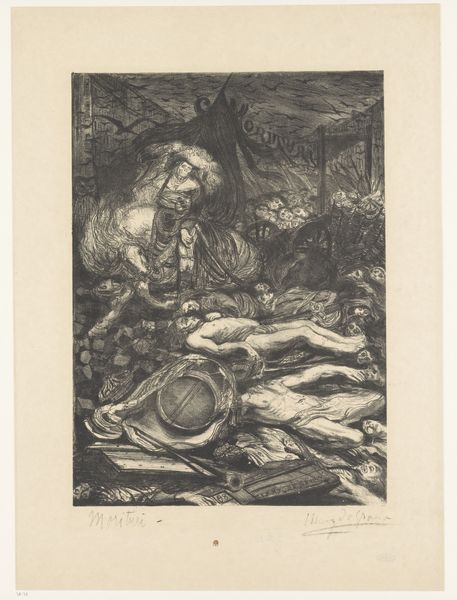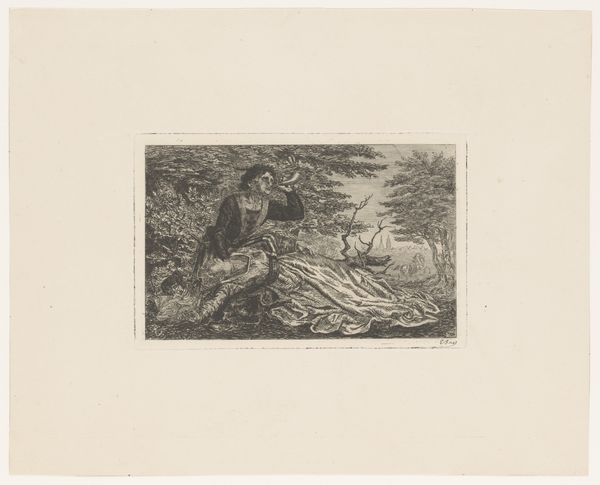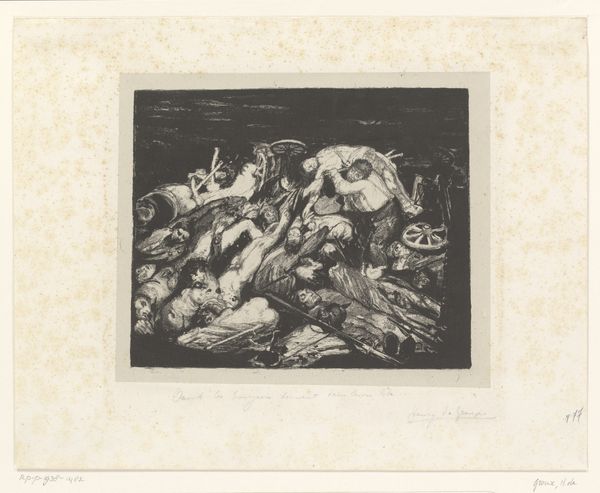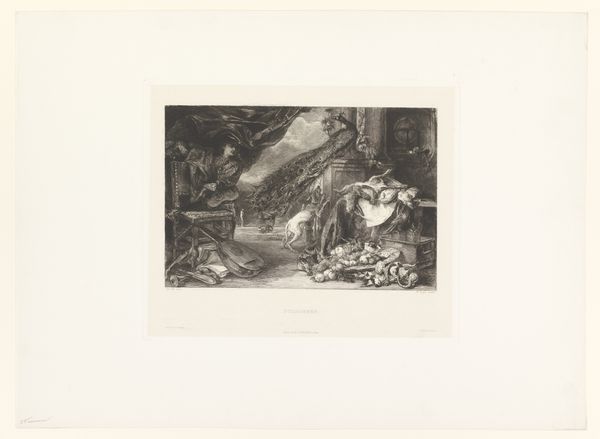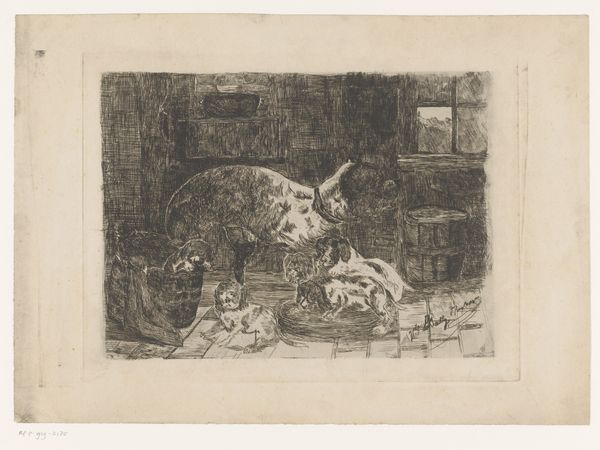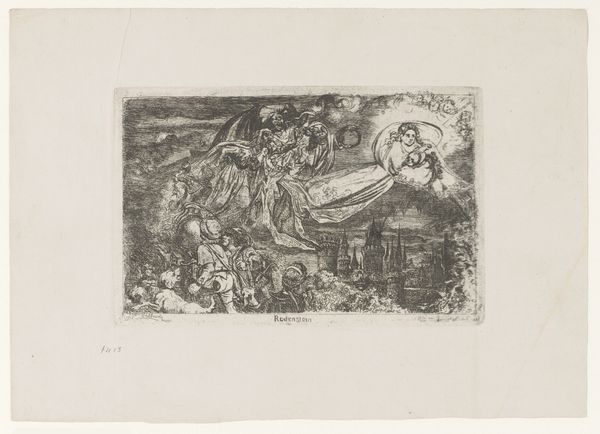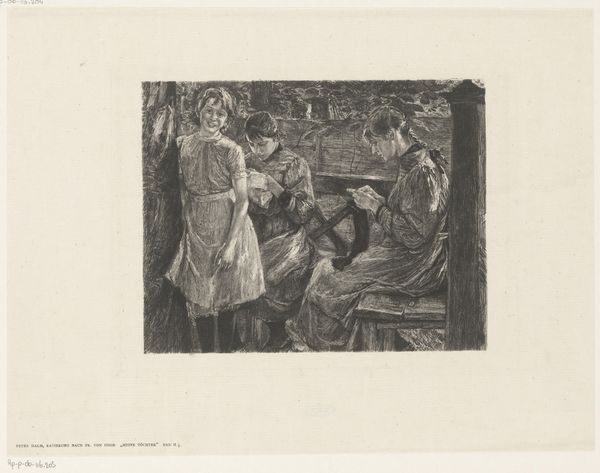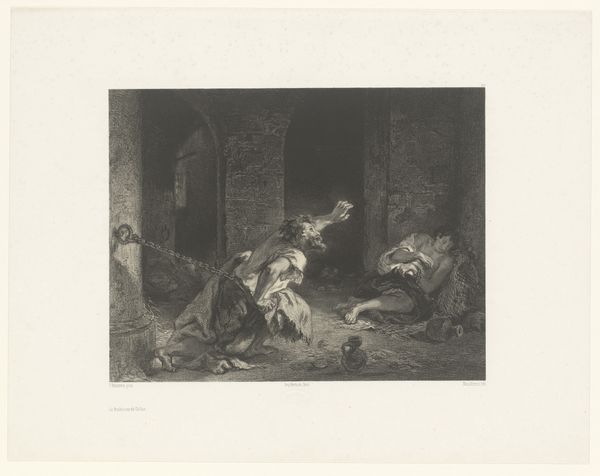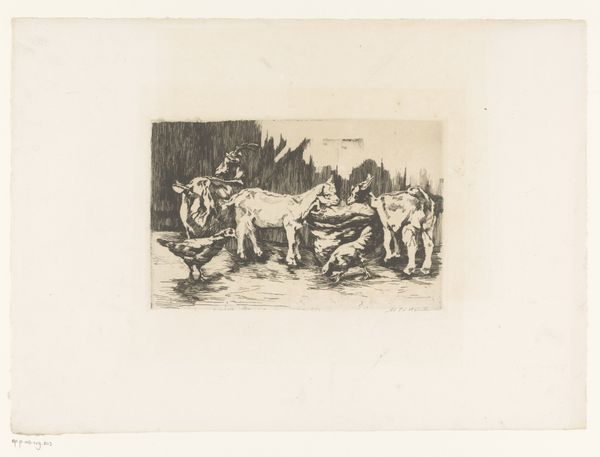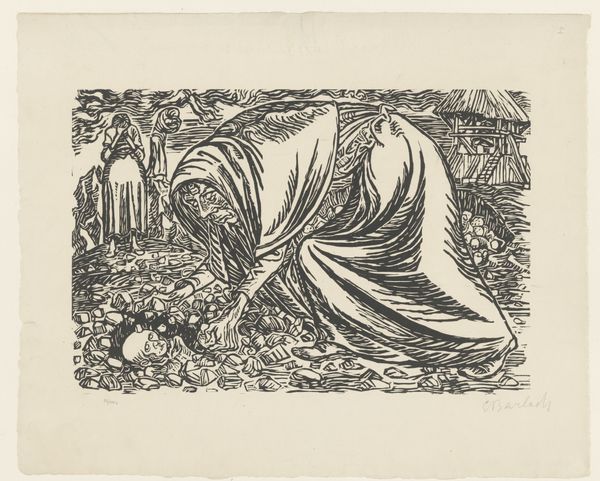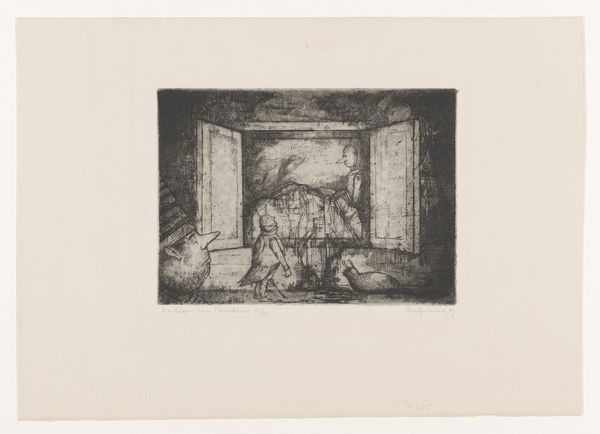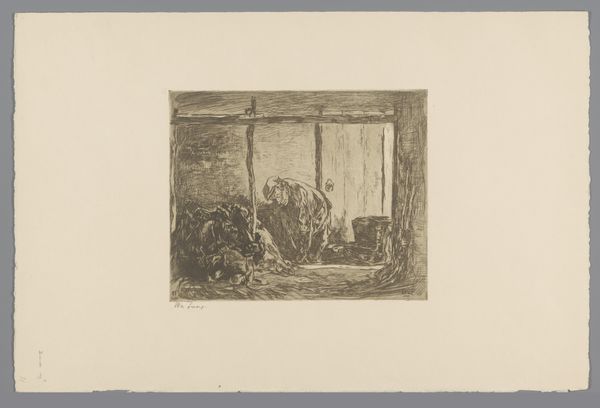
print, woodcut
#
narrative-art
# print
#
figuration
#
expressionism
#
woodcut
#
monochrome
Dimensions: height 207 mm, width 279 mm
Copyright: Rijks Museum: Open Domain
Curator: Looking at this print, the dense monochrome immediately strikes me. The stark contrast amplifies the unsettling energy of the crowd, doesn't it? Editor: Indeed. The work before us, entitled "Poppentheater," is attributed to Vladimir Silovsky and believed to have been created sometime between 1901 and 1922. It's a woodcut, a medium perfectly suited to convey this raw, expressionistic feeling. Curator: Woodcut, you say? I'm fascinated by how the artist utilizes this labor-intensive method to capture such a frenzied scene. Look at the sheer physicality evident in those carved lines. I imagine the artist's hand moving swiftly, decisively... Almost as if compelled by the very energy of the depicted performance. The making mimics the viewing experience! Editor: Absolutely. Expressionism in the early 20th century saw artists across Europe seeking ways to channel inner turmoil and comment on societal unrest. Consider the role of theaters themselves during that period. They served as spaces for both escapism and political articulation. What do you read into this image as political commentary? Curator: It’s like looking at mass hypnosis. Consider also how woodcut lends itself to mass production. Was the artist hoping to bring theatre, with all its political weight, directly into people's homes? A portable venue for protest... The image, both visually and physically, seems designed to implicate us in this theatrical moment, doesn’t it? Editor: Certainly, and given the period, a time marked by burgeoning media and shifting political landscapes, this print could also reflect on the growing influence of propaganda and mass manipulation. It is a very interesting idea, indeed. Curator: Looking at it through this light makes it more urgent. So how does an image like this play out on our contemporary stages? Editor: Silovsky's "Poppentheater" continues to resonate because it reminds us of the ever-present potential for both spectacle and subversion within public spaces. It shows the constant power dynamic within a society and its impact. Curator: Precisely, and as a physical object, this print itself participates in the distribution and perhaps even the shaping of socio-political ideas. Thanks for highlighting the powerful way "Poppentheater" engages its viewer.
Comments
No comments
Be the first to comment and join the conversation on the ultimate creative platform.
